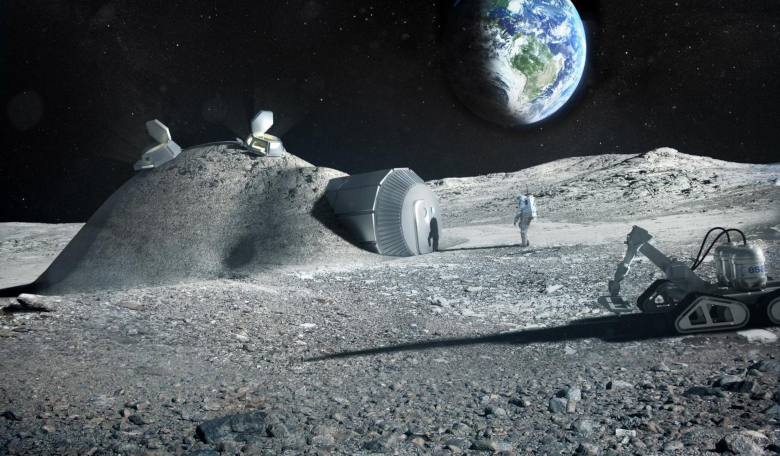The old saying of “waste not, want not” could bring new meaning to colonisers wanting to build bases on the Moon, as researchers studying how to stick potential lunar settlements together have found that urea – the second most abundant component in human pee – could be used in-situ as an additive for making high strength concrete.
Going to the Moon for a few days to collect samples is no longer the ambition of space agencies and private companies alike. The new target is to build bases or villages that in the long run will serve as a platform for extending our reach to more distant destinations, such as Mars.
But colonising the moon poses several problems. Not only would astronauts have to face high levels of radiation, large temperature fluctuations, and the possibility of being struck by a wayward meteoroid, shipping the necessary components to the Moon to construct the bases in the first place is a very costly business.
According to NASA, transporting less than half a kilogram (0.45 kg, or one pound) of material into orbit costs around $10,000 USD.
Needless to say, one way of keeping transportation costs down is to only transport the bare-minimum of materials needed – everything else should be built from raw resources found on the Moon.
Additive manufacturing or 3D printing as it is also known, has become big business in recent years and is arguably seen as the most viable way forward in constructing a Moon or Mars habitat.
Both NASA and ESA have demonstrated an interest in this technique as a way of achieving their off-world colonising ambitions, by using regolith – the layer of loose dusty material that coats the surface of many terrestrial planets and moons – to build the walls of intended habitats.
However, like building houses on this planet with bricks, you still need some sort of adhesive to stick the bricks together to strengthen the structure.
Studies have already been conducted into potential substances for sticking structures together, such as Sorel cement, which needs dry conditions to strengthen. Unfortunately to work, it needed a significant amount of water and water is a highly valuable resource on the lunar surface.
In the hunt for something more viable, which is also readily available, scientists from Norway, Spain, the Netherlands and Italy, in cooperation with ESA, have been looking into the potential of urea found in urine as a plasticiser.
Plasticisers are compounds added into concrete to soften the initial mixture and make it more pliable before it hardens. Superplasticisers perform the same job but they use less water to achieve the same results.
The use of urea as a superplasticiser is promising, as it breaks hydrogen bonds, and therefore reduces the viscosities of many aqueous mixtures. It is also naturally available wherever human colonisers plan on building their settlements.
To see just how suitable human pee would be in helping to construct a lunar base, the researchers whose lead author on the paper is Shima Pilehvar at Østfold University College, Norway, used a 3D printer to manufacture various 'mud' cylinders made out of material similar to moon regolith. These were then tested against other plasticisers to see which could bear heavy weights shortly after mixing, while keeping an almost stable shape in conditions similar to that of the Moon; such as extreme temperature cycles, the vacuum of space and a paucity of available water.
The team’s results, whose work is published in the Journal of Cleaner Production, found that urea and naphthalene-based superplasticizers retain their shape under external loads and can be built layer by layer. The compounds could also maintain a continuous flow during pumping through pipes in a 3D printer before the mixture became to hard to work with.
To test the cements longevity the urea based compounds were also subjected to freeze-thaw cycles like those experienced on the Moon. Although, the urea (and naphthalene-based) samples have the lowest compressive strength after 8 freeze-thaw cycles, write the researchers in their paper, the samples also exhibited a relatively high initial compressive strength (13 megapascals) before freeze-thaw cycle which is more practical for 3D printing purposes than the other samples, say Pilehvar and colleagues.
Despite the encouraging results, the scientists stress that further testing is needed to find the best building material for the moon bases, where it can be mass-produced using 3D printers.
"We have not yet investigated how the urea would be extracted from the urine, as we are assessing whether this would really be necessary, because perhaps its other components could also be used to form the geopolymer concrete," says one of the researchers from the Norwegian university, Anna-Lena Kjøniksen,
"The actual water in the urine could be used for the mixture, together with that which can be obtained on the Moon, or a combination of both," she added.











